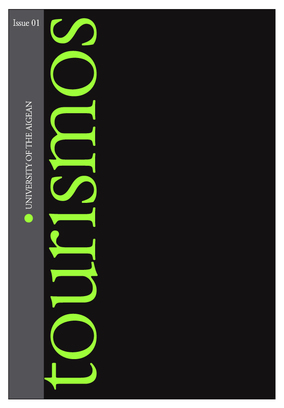Is 'Malaysia truly Asia'? : forecasting tourism demand from ASEAN using SARIMA approach
Part of : Tourismos : an international multidiciplinary journal of tourism ; Vol.7, No.1, 2012, pages 367-381
Issue:
Pages:
367-381
Section Title:
Case studies
Abstract:
Malaysia is well-known for her ‘blue’ and ‘green’ tourism attractions. Malaysian government launched several tourism programs to encourage and attract international tourist arrivals into Malaysia. This study therefore attempts to forecast the tourism demand for Malaysia from ASEAN countries. The literature on forecasting tourism demand is huge comprising various types of empirical analysis. Some of the researchers applied cross-sectional data, but most of the tourism demand forecasting used pure time-series analytical models. One of the important time-series modelling used in tourism forecasting is ARIMA modelling. This study employs quarterly time series data of ASEAN tourist arrivals to Malaysia for the period from 1995:Q1 to 2009:Q4 to forecast future tourism demand for Malaysia. The forecasting performance is based on seasonal ARIMA model. The findings of this study revealed that seasonality model does not offer any valuable insights or provide reliable forecasts on tourism demand for Malaysia by ASEAN countries. This scenario occurs because of the fact that ‘Malaysia is Truly Asia’.
Subject:
Subject (LC):
Keywords:
one-period-ahead forecasting, SARIMA, ASEAN
Notes:
Περιέχει σχήματα, πίνακες και βιβλιογραφία
References (1):
- Akal, M. (2004). Forecasting Turkey’s tourism revenues by ARMAX model. Tourism Management, Vol. 25, No.5, pp.565-580.Akal, M. (2010). Economic implications of international tourism on Turkish economy. TOURISMOS, Vol. 5, No.1, pp.131-152.Botti, L., Peypoch, N., Randriamboarison, R. & Solonandrasana, B. (2007). An econometric model of tourism demand in France. TOURISMOS, Vol. 2, No.1, pp.115-126.Athanasopoulos, G. & Hyndman, R.J. (2008). Modeling and forecasting Australian domestic tourism. Tourism Management, Vol. 29, pp.19-31.Bonham, C., Gangnes, B. & Zhau, T. (2008). Modeling tourism: a fully identified VECM approach. International Journal of Forecasting, Vol. 25, No.3, pp.531-549.Chan, F., Lim, C. & McAleer, M. (2005). Modeling multivariate international tourism demand and volatility. Tourism Management, Vol. 26, No.3, pp.459-471.Chu, F.L. (2008a). Forecasting tourism demand with ARMA-based methods. Tourism Management, Vol. 30, No.2, pp.740-751.Chu, F.L. (2008b). Analyzing and forecasting tourism demand with ARAR algorithm. Tourism Management, Vol. 29, No.6, pp.1185-1196.Coshall, J.T. (2009). Combining volatility and smoothing forecasts of UK demand for international tourism. Tourism Management, Vol. 30, No.4, pp.495-511.Franses, P.H. (1998). Time-series models for business and economic forecasting. United Kingdom, Cambridge University Press.Greenidge, K. (2001). Forecasting tourism demand. An STM approach. Annals of Tourism Research, Vol. 28, No.1, pp.8-112.Josiam, M.B., Sohail, M.S. & Monteiro A.P. (2007). Curry cuisine: Perceptions of Indian restaurants in Malaysia. TOURISMOS, Vol. 2, No.2, pp.25-37.Kim, J.H. & Wong, K.F. (2006). Effects of news shocks on inbound tourists demand volatility in Korea. Journal of Travel Research, Vol. 44, No.4, pp.457-466.Kulendran, N. & Witt, S. F. (2001). Cointegration versus least squares regression. Annals of Tourism Research, Vol. 28, No.2, pp.291-311.Lee, C.K., Song, H.J. & Mjelde, J.W. (2008). The forecasting of international expo tourism using quantitative and qualitative techniques. Tourism Management, Vol. 29, No.6, pp.1084-1098.Loganathan, N., Ibrahim, Y. & Harun, M. (2008). Tourism development policy, strategic alliances and impact of consumer price index on tourist arrivals: the case of Malaysia. TOURISMOS, Vol. 3, No.1, pp.83-98.Psillakis, Z., Panagopoulos, A. & Kanellopoulos, D. (2009). Low cost inferential forecasting and tourism demand in accommodation industry. TOURISMOS, Vol. 4, No.2, pp.47-68.Preez, J. & Witt, S.F. (2003). Univariate versus multivariate time series forecasting: an application to international tourism demand. International Journal of Forecasting, Vol. 19, No.3, pp.435-451.Shareef, R. & McAleer, M. (2005). Modeling international tourism demand and volatility in small island tourism economics. International Journal of Tourism Research, Vol. 7, No.6, pp.313-333.Shareef, R. & McAleer, M. (2007). Modeling the uncertainty in monthly international tourist arrivals to the Maldives. Tourism Management, Vol. 28, No.1, pp.23-45.Song, H., Wong, K.F. & Chon, K.S. (2003). Modeling and forecasting the demand for Hong Kong Tourism. Hospitality Management, Vol. 22, pp.435-451.Wong, K., Song, H., Witt, S.F. & Wu, D.C. (2007). Tourism forecasting: to combine or not to combine? Tourism Management, Vol. 28, pp.1068-1078.World Tourism Organization (WTO). Http//:www.unwto.org.tr. Accessed the 1 st of October 2010, 10:15.




